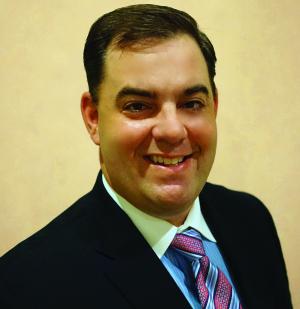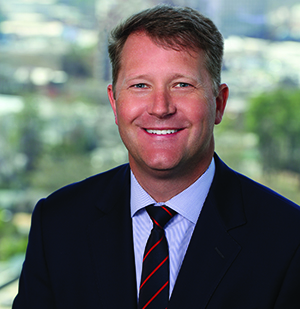When Constantine Hatzivassiliou was deciding to leave The Bank of New York Mellon, it took him about a year to figure out where to go. He wanted a firm that offered trust services, fiduciary-level advice and a more customized level of service to his clients. He considered HighTower and Bessemer Trust, but ultimately decided on Camden Capital, a $1.4 billion RIA more known for wealth management and legacy planning for high-net-worth investors than providing services to other advisors. He moved over in February.
“HighTower operates on a brokerage model in the sense that each team or each location is siloed and almost acting independently of the parent company,” Hatzivassiliou says. “I’m a big believer in unified, centralized advice for clients so that the best thinking of the entire firm translates down to all clients, versus individual theories being applied to different managers.” Hatzivassiliou likes the fact that the Camden investment policy committee meets on a regular basis and the best thinking filters down for the clients’ benefit, he says.

If Hatzivassiliou is any indication, some individual RIA firms are emerging as true competitors to the large aggregator firms and service providers, such as HighTower, United Capital, Focus Financial Partners and Dynasty Financial Partners. And while Camden is not in the business of aggregating firms, it does recruit advisors and act as a service provider.
This rise of the “mini-aggregator” is an accelerating trend: Mature, established advisory firms who have built out their own infrastructure are realizing that they can rent out their back offices and operations.
“They are starting to understand what the C-level execs in the wirehouses did many years ago, which is for every dollar that you bring in, it doesn’t cost you an incremental dollar,” says Pete Dorsey, managing director of institutional sales at TD Ameritrade.
For now, these firms are not likely to disrupt the HighTowers and Focus Financials of the world, as those aggregators are going after much larger advisors. The mini-aggregators are smaller and more focused on a specific geography, as opposed to trying to create a national footprint. They don’t have the capital and financial backing of the large players. Yet they are attracting advisors such as Hatzivassiliou.
“In the last year or so, I’ve seen a lot more of it, as firms are looking at different opportunities to scale,” says Corey Kupfer, director of entrepreneur services at MarketCounsel. “And I think the bigger players have become so prominent that if you study their models, you can potentially do a mini version of it. I would expect that there’ll probably be a handful of firms that are doing this at a low level that will grow and emerge to be competitors to the larger aggregators.”
John A. Kailunas II, CEO and founder of Regal Financial Group, RIA Regal Investment Advisors, and broker/dealer Regulus, started bringing advisors onto his firm’s platform two years ago. They now have 56 advisors managing $700 million under the RIA. In the first year of switching to the model, gross sales were up 60 percent. Last year, gross sales grew 58 percent, and the firm is on track to grow 40 percent this year, Kailunas says.
Kailunas believes the trend will gain ground, but won’t disrupt the development of the large aggregators. His firm, after all, is going after a different market—advisors at independent broker/dealers, insurance firms and banks—not the wirehouses. At the same time, he is borrowing from the HighTower playbook.
Currently, when an advisor comes onto the Regal platform, for example, they are signed up for every service the firm offers, even if they don’t use all of them. Kailunas wants to switch that to a tiered model, similar to the way larger aggregators operate, so advisors can just pay for the services they want.
How It Works
Most of these advisors are not going out and mass-marketing their platforms. In many cases, it starts as an accommodation to an advisor in their same geographic area who asks to plug into the platform. It works out well for both parties and they keep doing it, says Tim Welsh, president and founder of Nexus Strategy in Larkspur, Calif.
“I can say, ‘Hey, I have capacity in my back office,’” Welsh says. “‘We can run another $50 million through here. How do we go get it? Oh, why don’t we let these folks rent our back office and our compliance and our due diligence and our investment programs. And we can get 50 basis points, and all we have to do is absorb some risk of supervision.’”
It could be in the form of a contractual agreement, similar to Dynasty’s model, where the firm will run the back office for a fee. Some are doing it by acquisition, where the firm will buy a piece of the advisor’s business and plug them into the platform.

Atlanta Capital Group has acquired 13 practices over the last 10 years, says David Millican IV, co-founder and principal managing partner. Five years ago, the firm also started adding advisors to the platform. It now has 19 advisors plugged in, in addition to those they’ve acquired.
“As we’ve added more infrastructure, gotten bigger and invested back in the firm, we realized that there was a need for folks that wanted to have access to that, wanted to be independent, but couldn’t afford it,” Millican says.
Since they started the firm in 2012, revenue and assets have grown 1,400 percent.
Tom Karsten, president and chief investment officer of Karsten Advisors, has carved out a niche in the tax space, acquiring 11 advisory firms and accountants in the last 14 years. He now has offices in Denver and Fort Worth, Texas, but that could expand to other cities in the next few months. Karsten’s return on investment related to the purchase of the tax firms has been 19 percent on an annualized basis, he says.
He’s currently competing with HighTower for one advisor’s practice, which he could not name. The advisor used to be a CPA, so Karsten figures he will be more attracted to the tax background of the firm, even though the terms might be slightly lower than HighTower’s. “Culturally, they think we’re a better fit,” he says.
Community-Based
Because these RIAs are typically not out actively recruiting for this business, a lot of the connections happen on a local level, Kupfer says, as there is a “trust factor” involved.
But that local focus is a differentiator. Regal’s Kailunas, for example, knows every one of his advisors personally. “It’s amazing to me how many people want that relationship that has been lost in some of these big platforms,” Kailunas says. “They’re great platforms—don’t get me wrong. They’re very successful and they work for a lot of people. But there’s a segment of the advisor population that still wants that home cooking, and that’s
who we are.”
All of Atlanta Capital Group’s advisors are in the Southeast area. That gives the firm an advantage, Millican says, because the team knows their market, and they’re able to provide infrastructure at the ground level.
But the local focus also means these mini-aggregators tend to focus on smaller advisors, usually with under $100 million in assets. Those are the advisors who are attracted to these platforms and need the services. Many of these smaller firms say the larger aggregators won’t give them the time of day.
“If you’re local and community-based and you just don’t have $500 million, your choices are limited, so that’s why you end up renting someone else’s back office,” Welsh says. “This is really the underserved market that’s being soaked up by local community guys.”
Karsten, for instance, goes after practices in the $10 million to $70 million range. Regal Financial’s sweet spot is advisors with $25 million to $100 million in assets.
“Part of the challenge [of competing against the larger aggregators] is the bigger players all have financing—private equity and otherwise,” Kupfer says.
In contrast, these RIA firms are typically funded through their cash flow or small loans. But for firms to emerge as real competitors to the aggregators, they will have to make the service provider model and platform the core part of their business, Kupfer adds.
“The jump would have to be, if somebody does a few of these deals and they’re working well, it’s a fundamental business decision: Do they want to continue to basically run an investment advisory firm that provides these outside services to some people, or do they really want to become an aggregator or an integrated service provider—like a Dynasty in the space? In which case, they would have to get into that business as the focus and raise capital.”
Although it may take a while for these firms to get to that stage, a handful could emerge as formidable competitors if they make a conscious effort to focus on aggregation.
“I think this is just another example of the maturation of the independent RIA space—that there’s just more and more models and people looking to grow and provide services out there,” Kupfer says.




